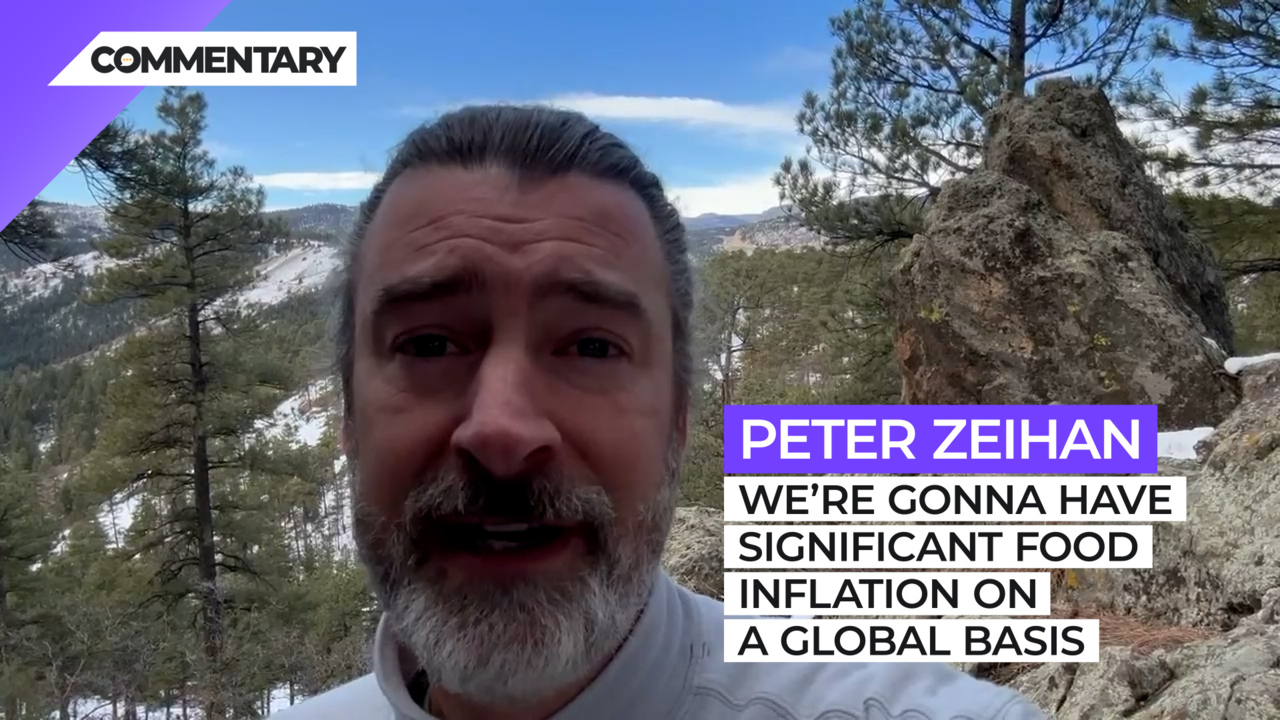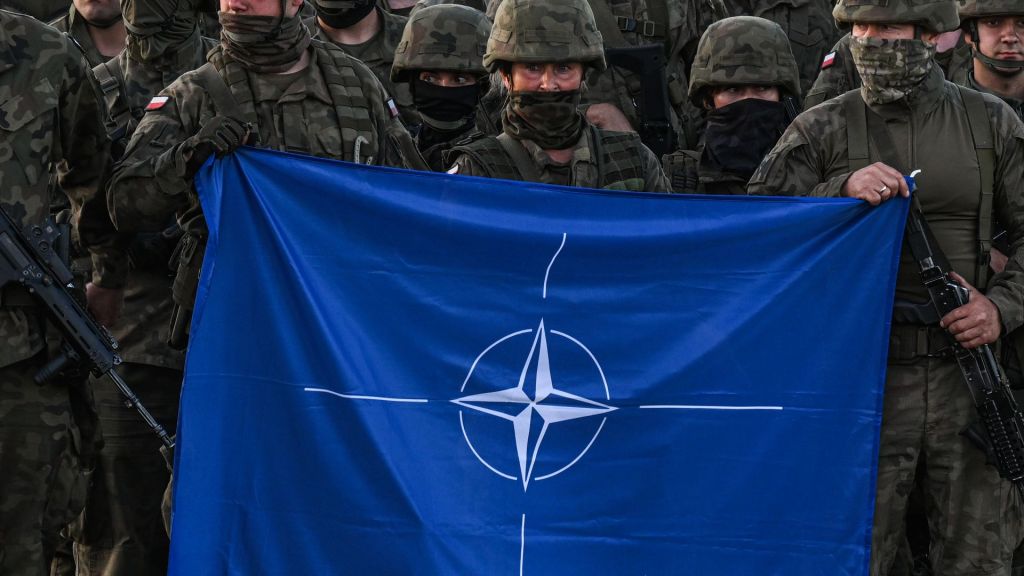
Commentary
-
Our commentary partners will help you reach your own conclusions on complex topics.
Hey everybody, Peter Zeihan here coming to you from Colorado. And today we’re going to talk about inflation. Now, as I’m sure everyone is aware, last year was a little rough for inflation. In mid summer, we hit 9% year on year, which really ate into people’s incomes and caused a lot of pain. Since then, especially in the fourth quarter of last year, though inflation has been coming down. And we’re now down to about half that level. And it seems to be still dropping. And for the next couple of months, I would expect it to continue to be dropping. But we shouldn’t get used to that we’re dealing with some mid and long term factors that are at significant cross currents. So let’s start with the mid because that’s the good news. The inflation pulse that we experienced in 2020, and 2021 and into 2022 was largely COVID. related. Now, from the point that you change how you live, it takes about a year and a half for the industrial supply chains that service your needs in terms of manufactured goods to kind of catch up to where you are. And for a couple of years, we had something new every few months, we had our initial lockdown, then we had an initial opening, then we had the Delta strain that we the Omicron strain, then we had the vaccines and we had antivaxxers then we had the decision that we needed second shots and blah, blah, blah, every single time there was a shift, our demand profile changed. And the manufacturers had to retool everything to match whatever it happened to be. So are we staying home to want to do more home repairs with a new computer? Or are we excited to get out and we’re going to occasionally buying a car or going going back. And it was over and over and over? Well, in roughly June of 2021, Arizona, Texas and Florida threw off their restrictions for the last time. And by the time we got to December, everyone in the United States, except for California thrown off the restrictions in California followed suit a couple minutes after that. Well, you know, you fast forward from that general opening until now, it’s been about 18 months. So our demand profile changed that one last time. And now we’ve largely caught up. In addition, there were some short term factors that have also pushed inflation down. We had some spooling up of capacity in terms of gasoline refining, because prices have been so high, so the refiners were able to build more that took a few weeks, the European system has been remarkably warm temperatures in Europe, this winter had been 20 to 30 degrees above average for six weeks now, that took some of the heat out of energy prices. And globally, last year agriculturalist had some of the best weather they’ve ever had, and almost every single growing season, put all that together and inflation has come down probably has a couple more months to go. And I would expect for things that were particularly out of whack, like say car prices to really get better over the course of the next three months. That’s the midterm. Unfortunately, there’s some long term trends going absolutely the opposite direction. The Biden administration has this thing called the inflation reduction act that is seeking to electrify a lot of the system on environmental grounds, that is going to require a massive industrial build out and everything that involves electricity, so copper wiring, lithium batteries, electric vehicles and all the rest. A lot of this capacity for the manufacturing, the actual industrial base has to build from be built from scratch. And anytime you do that that’s inflationary. And anytime you’ve got demand for a product that doesn’t really exist in terms of mass manufacturing, that is also inflationary. In addition, we’re seeing disruptions out of the Russian space, fertilizer exports from the Russians and the Belarusians are already down by 20 to 40%, based on which nutrient you’re looking at. Now, that’s been true for a year. But last year, most agriculturalists worldwide had a degree of reserve that they could draw upon, you can’t draw down your reserve twice and a lot of places, especially in Africa, that has not been replenished. That would suggest we’re gonna have significant food inflation on a global basis later this year. And that assumes nothing else goes online. We also can’t count on weather in Europe staying cold forever. And that means higher natural gas prices and higher electricity prices, which means a lot of industrial activity in Europe, whether it’s steel forging, aluminum smelting, fabrication of fertilizer and petrochemicals all that good stuff goes away, with the economy, likely to get hit the hardest being Germany, because Germany uses Russian natural gas not just for power, but as a feedstock for its entire petrochemical and therefore its entire manufacturing system. So we should see significantly lower industrial output out of the Germans, not just for a year, but over the long term until they can figure out a new economic model or other places can build out industrial plant to replace what we used to get from the Germans. There’s also going to be some problems with the Chinese. We already have the Russians cutting their energy output by about a half a million to three quarters of million barrels per day. That’s only about 10 to 12% of their total output but that’s enough to feel make a pinch because the Chinese had been importing more and more crude from the Russians. We because it’s been at a lower cost, well, if it’s not produced, it can’t be imported. And any problems that we see with shipping or insurance or the technical aspects of fields, that the Russians can’t maintain themselves, the Chinese are the very last country in the kickline. And they’re the ones who are going to feel all the pain. That means energy inflation for the Chinese, which means product inflation for everyone else. In addition, the demographic situation in China has gone from atrocious to something truly horrible. And so labor costs and the Chinese system are now at a point that they’re generating labor inflation, which means manufacturing inflation for everybody else. And there’s no fix here unless we can figure out how to clone fully skilled people when they’re in their 20s. I’m unaware of any imminent breakthroughs on that front. And all of this assumes no miscalculations on the part of Moscow or Washington, or Brussels, or especially Beijing. And we see a lot of those on Deck. The decision making capacity within the Chinese system is breaking down the balloon incident is a great example of that the Chinese are still trying to save face and just blatantly lying about it, even though the United States actually has all the spy apparatus from the balloon in hand now, so it’s just you know, it just makes them look stupid. And they’re carrying out this desire to save face into economic policy and military policy. And it looks like they’re about to do some things in security policy with the Russians and trade policy with the Americans that would almost be designed to trigger a retaliation. Either way, we should expect to see fewer goods coming out of the Chinese space or even if they continue more expensive goods. Now, all of these trends are not things you fix with an executive order. They require a sharp change in policy or more likely, the private sector adapting to the new circumstances. The bottom line is that North America as a unit needs to roughly double the size of an industrial plant as the Chinese and to a lesser degree, the Germans fall out of the system. You don’t do that in six months. That’s a five year program, which means that we should think of the inflation environment of 2022 as arguably the lowest inflation we are going to see for several years. Good luck.
-
Hurricane Helene hits US coast, Appalachia and beyond
Hurricane Helene hit Florida and Georgia overnight between Sept. 26 and 27 as a Category 4 hurricane, and accompanying storms will continue reaching deeper into the continental United States today. Dangerous flash flooding from the hurricane, known as storm surge, was some of the worst flooding that the Tampa Bay area has ever seen, and… -
Israel holds upper hand against Lebanon, Hezbollah and Iran
On Wednesday, Sept. 25, Hezbollah launched a ballistic missile at Tel Aviv in retaliation for Israel’s explosive pager attack that blew up devices across Lebanon. Although Israel’s defense systems intercepted the surface-to-surface missile, the attempted strike on Tel Aviv marked a significant escalation by Hezbollah. Since the siege on Gaza began, shortly after the Oct. 7, 2023,… -
The Sinaloa Cartel civil war
Fears of a civil war within the Sinaloa Cartel are growing as violence between competing factions within the cartel continues. The Mexican Army has dispatched around 600 elite troops to Sinaloa to help quell those fears, in addition to roughly 2,200 regular soldiers and National Guard. Watch the above video as Straight Arrow News contributor… -
New Ukrainian weapons hit Russia where it hurts
Ukrainian drones struck a major Russian ammunition depot, triggering a massive explosion that was captured on camera. According to the Ukrainian military, 2,000 tons of munitions had arrived at the depot before the attack. Over the past two years, Ukraine has significantly increased its domestic drone production, allowing it to scale up attacks on military… -
Weighing social costs vs. economic benefits on immigration
Global human migration is one of the defining elements of our current historical era, according to the United Nations. Migrants face both the incentives to leave — forced out by climate change, crime and corruption, extreme poverty or violence — and incentives for where to go, based on available job opportunities and so on. Migration…
Latest Stories
-
 Getty Images
Getty Images
Illegal border crossing apprehensions plunge to 8,300 in February: Report
-
 Getty Images
Getty Images
Jay-Z sues sexual assault accuser and lawyer, says Roc Nation lost $20 million
-
 Getty Images
Getty Images
Democrats want DOJ attorney who dropped Eric Adams case investigated
-
 Getty Images
Getty Images
Millions of users’ personal data shared with US law enforcement: Report
-
 Getty Images
Getty Images
Republican leaders urge a pause on town hall meetings
Popular Opinions
-
In addition to the facts, we believe it’s vital to hear perspectives from all sides of the political spectrum.
Latest Opinions
In addition to the facts, we believe it’s vital to hear perspectives from all sides of the political spectrum. We hope these different voices will help you reach your own conclusions.
The opinions published in this section are solely those of the contributors and do not reflect the views of Straight Arrow News.





















Latest Commentary
We know it is important to hear from a diverse range of observers on the complex topics we face and believe our commentary partners will help you reach your own conclusions.
The commentaries published in this section are solely those of the contributors and do not reflect the views of Straight Arrow News.
Dr. Frank Luntz
Pollster and Political Analyst‘Biased’: What Americans think of ‘mainstream media’
‘Getting rid of them’: Americans discuss Trump and immigration
‘Woke’: Why some Biden 2020 voters backed Trump in 2024